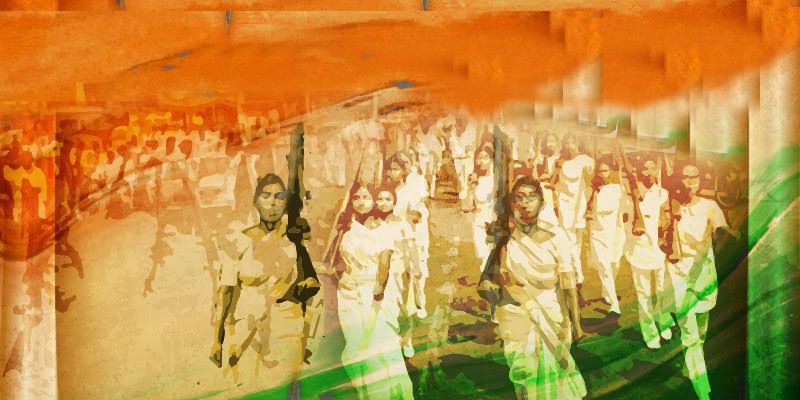From India’s independence to their own freedom — women and their struggle for independence
An unprecedented chain of events marked the struggle of India’s independence. Written in the blood of thousands of lives, it is a story of the heroic deeds of individuals, of which some were recorded, while others were lost forever.
The struggle for independence was not just about ousting British rule, but also about challenging norms and transforming from within, especially when it came to old customs and beliefs that increased the divide among Indians. Women and the societal challenges they faced too underwent a change. Women took to streets, picketing, leading armies and being active participants in the struggle for independence.
Revolt of 1857
The Revolt of 1857 shook the British. It began as a mutiny of sepoys of the East India Company in Meerut and soon spread across India. Among the leaders of this revolt were women such as Begum Hazrat Mahal and Rani Lakshmi Bai who led the people of Awadh and Jhansi against the British.
Rani Lakshmi Bai was martyred and Begum Hazrat Mahal had to flee to Nepal.
Historian C. A. Kinkaid writes about the Rani of Jhansi, “I prefer to think of her as a young and gallant lady, who, forced by events beyond her control, joined Nana Sahib and fell on the field of honour, fighting for a lost cause.”
Even before the revolt there were voices of dissent that had risen and one that emerged from Karnataka was of Kittur Rani Chennamma, who fought to save the state of Kittur from British after the death of her husband.

It was the Doctrine of Lapse, officially codified between 1848 and 1856 by Lord Dalhousie, that triggered some of these rulers to fight to retain control of their states and kingdoms. This doctrine stipulated that in case the ruler of an independent state died childless, the right of ruling the State reverted or ‘lapsed’ to the sovereign.
The beginning of twentieth century
The first two decades of the 20th Century saw individual women stand out. It was a time when a number of women’s organisations were also formed, writes Manini Chatterjee, in her essay titled – 1930: Turning Point In The Participation of Women in the Freedom Struggle.
This included the Bharat Stri Mandal in Calcutta, formed in 1910 by Sarala Debi, and the Women’s India Association founded in 1917 by Annie Besant, Dorothy Jinarajadasa, Malati Patwardhan, Ammu Saminathan, Mrs Dadabhoy and Mrs Ambujammal.
Annie Besant also led the Home Rule League and was elected President of the Calcutta Congress session in 1917. That year was also significant as Sarojini Naidu led a delegation of women to meet the Montagu-Chelmsford Committee to demand a series of reforms in the condition of women.
The call for a non-cooperation movement by Gandhi in 1920-21 saw women come out to participate in the movement. Women took to streets picketing liquor shops, and holding dharnas.

Chatterjee writes how women were shining through this time – Basanti Debi (Mrs C.R.Das), Urmila Debi, and Suniti Debi, were well-known women organisers during the Non-Cooperation Movement. In 1925, Sarojini Naidu was elected President of Indian National Congress, the first Indian woman to hold that post.
Women were part of not just the Gandhian movement but were also revolutionaries in their own right. One such woman Chatterjee points to is Sarala Debi Ghoshal. She writes, “She was not a participant but a patron of revolutionary groups, and is said to have got her friends and acquaintances to take a pledge on the map of India that they would be prepared to sacrifice their lives for the country’s independence. She patronised akharas (physical culture clubs) where young men were taught judo, karate, swordplay, and wrestling.”
The Civil Disobedience Movement- 1930
Chatterjee calls the year 1930 a turning point in the participation of women in the freedom struggle. According to her, before 1930 only a handful of women were involved and stood out but from 1930 onwards women became mass participants, not just in big cities but also from small towns and villages.
“This was a result of Mahatma Gandhi’s direct and active encouragement to women to participate in the movement,” she notes.
It was not just the Gandhian movement. Women found their footing in the revolutionary movement also. From being patrons, they became participants. Revolutionary women took up arms and were determined not to lag behind. “As Pritilata Waddadar said in her dying statement: ‘Females are determined that they will no more lag behind and stand side by side with their brothers in any activities however dangerous or difficult. I earnestly hope that my sisters will no more think themselves weaker and will get themselves ready to face all dangers and difficulties and join the revolutionary movement in their thousands’,” writes Chatterjee.
Emphasising the importance of the Civil Disobedience movement, historian Ramachandra Guha writes in India After Gandhi, “Freedom came to India on 15 August 1947, but patriotically Indians had celebrated their first Independence Day 17 years before. In the first week of January 1930 the Indian National Congress passed a resolution fixing the last Sunday of the month for countrywide demonstrations in support of Pune Swaraj, or complete independence. This, it was felt, would both raise nationalist aspirations and force the British seriously to consider giving up power.”
In 1942, Gandhi made the call to Quit India. On it heels came Partition and displacement of people across borders. India was free from the crutches of the British in 1945 but the freedom had come at a cost.
Today, as we celebrate 70 years of independence, women are still fighting for equality– at home and workplace. Women are fighting for respect and the freedom to make choices. Will it take us 70 more years to get where we want to be? I do hope not.






